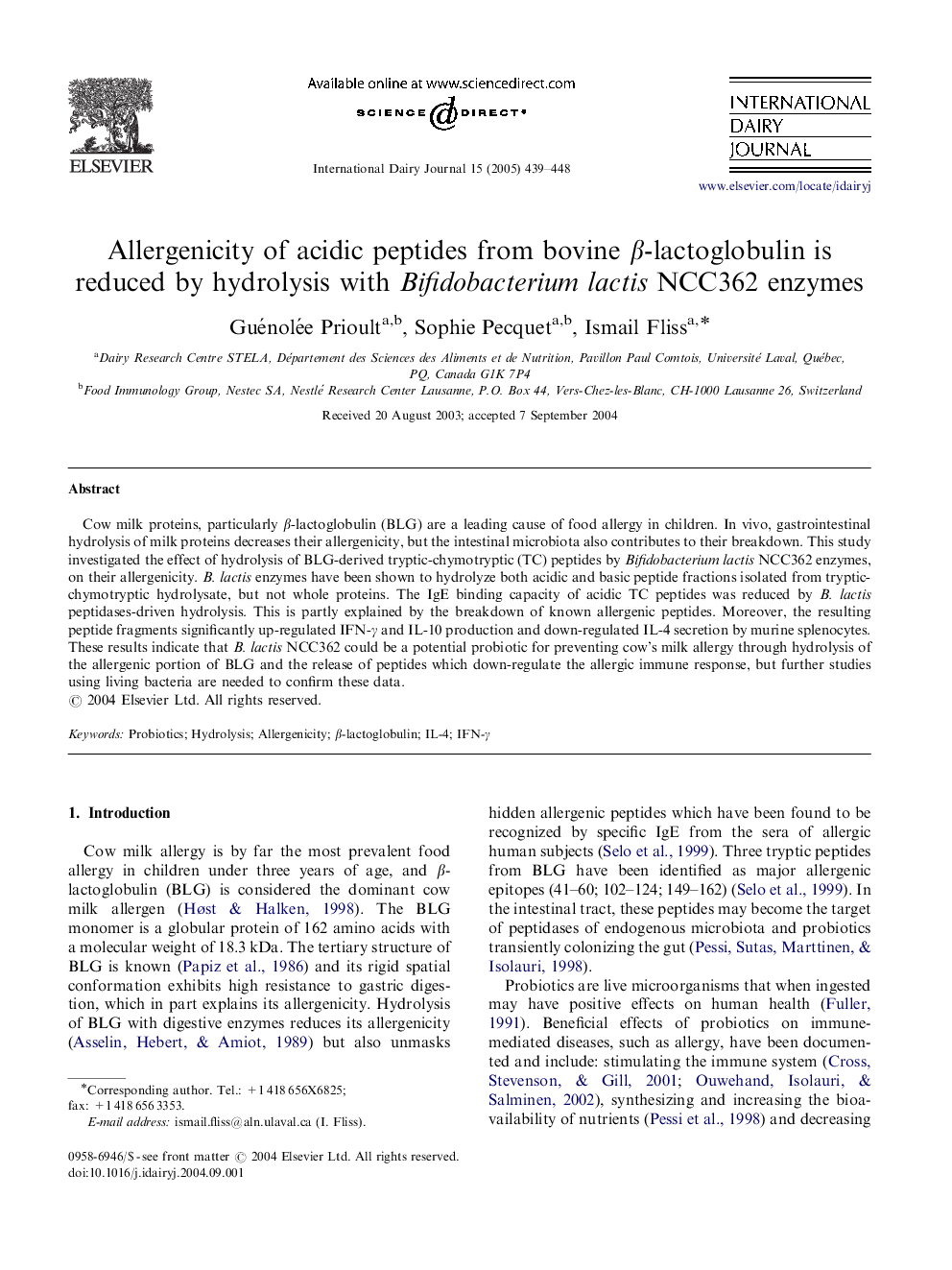| Article ID | Journal | Published Year | Pages | File Type |
|---|---|---|---|---|
| 8979182 | International Dairy Journal | 2005 | 10 Pages |
Abstract
Cow milk proteins, particularly β-lactoglobulin (BLG) are a leading cause of food allergy in children. In vivo, gastrointestinal hydrolysis of milk proteins decreases their allergenicity, but the intestinal microbiota also contributes to their breakdown. This study investigated the effect of hydrolysis of BLG-derived tryptic-chymotryptic (TC) peptides by Bifidobacterium lactis NCC362 enzymes, on their allergenicity. B. lactis enzymes have been shown to hydrolyze both acidic and basic peptide fractions isolated from tryptic-chymotryptic hydrolysate, but not whole proteins. The IgE binding capacity of acidic TC peptides was reduced by B. lactis peptidases-driven hydrolysis. This is partly explained by the breakdown of known allergenic peptides. Moreover, the resulting peptide fragments significantly up-regulated IFN-γ and IL-10 production and down-regulated IL-4 secretion by murine splenocytes. These results indicate that B. lactis NCC362 could be a potential probiotic for preventing cow's milk allergy through hydrolysis of the allergenic portion of BLG and the release of peptides which down-regulate the allergic immune response, but further studies using living bacteria are needed to confirm these data.
Related Topics
Life Sciences
Agricultural and Biological Sciences
Food Science
Authors
Guénolée Prioult, Sophie Pecquet, Ismail Fliss,
